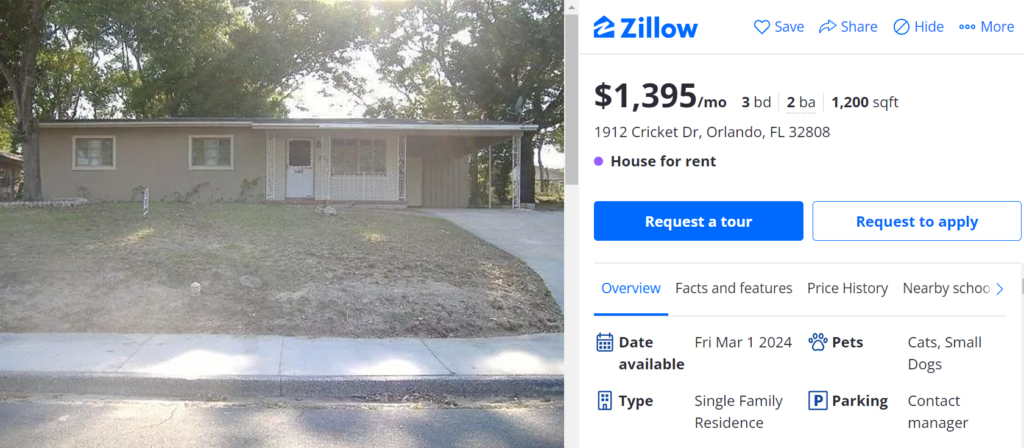
Unlike regular saving, extreme saving involves saving extreme portions of your income or saving money in extreme ways.
Maybe you’d like to buy a house. Or perhaps you hope to retire early. Extreme saving can help you get there faster. This is because saving at an extreme level means you retain significantly more of your hard earned money to use toward your goals and aspirations.
This post will walk you through the art of extreme saving. I will teach you what extreme savings are and discuss extreme ways you can save money to accelerate yourself toward financial independence much sooner than the average person.
Contents
What Are Extreme Savings
Extreme saving is when a person saves an extreme portion of their income or when someone implements extreme strategies to save money.
For example, extreme saving would be a family of 5 with an average household income of $83,195 saving 50% or more of their income. In order to do so, this family would inevitably have to deploy some extreme tactics to get to this substantial level of savings.
The Art Of Extreme Saving
The art of extreme saving is all about using practical strategies to achieve savings levels that are extreme for your situation. I cannot emphasize enough the critical components to this which are both practicality and severity of savings.
Simply saving a large portion of your income does not necessarily constitute extreme saving.
For example, I’ve been saving 50 – 75% of my take home pay for the past several years. This may seem extreme – but it’s not because I’m single, childless, and have earned a hefty income over these years.
As a result, saving a large portion of my income is pretty easy and thus far from being considered extreme even when compared to the average American household who saves closer to 12% of their $83,195 after tax income.
Extreme for me would probably be in the range of 90% or more. That would hurt a bit!
Meanwhile, I’ve seen stories of people deploying some pretty extreme tactics to save money while totally missing out on the practicality component. For instance, a guy going around smoking other people’s discarded cigarettes butts borders more on the side of degeneracy than it does sound financial strategy.
Extreme Saving From Around The Web
Many well respected blogs have posted about extreme ways to save money. Here’s what a few of them have to say:
- The ladies at Clever Girl Finance have a wonderful post listing 25 Extreme Ways To Save Money. Within, they mention making your own toothpaste, freezing your food, and dumpster diving as ways to save more money.
- The folks at Money Under 30 add to the discussion by recommending 1-2 minute military showers and using a bidet as extreme ways to save money.
- And finally, over at Money Talks News you can find the suggestion of cutting cable, internet, and your mobile phone to live like it’s 1949.
These are indeed very solid suggestions for achieving extreme savings – but, there is a problem with them all.
That is, while extreme ways to save money, suggestions such as these would barely make a significant impact on a person’s actual financial standing. Given how difficult some of these savings tactics would be, I don’t think the juice is worth the squeeze to.
The Extreme Saving Iceberg
A better way to go about extreme saving would be to frame your approach using the iceberg method. Rather than focusing on finite tactics like the ones mentioned above, you are much better served focusing on extreme savings methods that make big splashes to significantly boost your finances forward.

In terms of icebergs, we can usually only see a small portion of it from the surface while the rest remains hidden beneath the depths. Let’s call it about ¼ visible versus ¾ hidden.
Thinking of our finances the same way – it is easy for us to get caught up trying to optimize the obvious 25% as suggested around the web. But these actions make no sense unless we’ve fully optimized the more significant 75% that makes up the whole.
Certainly, dumpster diving and taking 2 minute showers can save us money – but we must take a step back to consider whether there are far greater opportunities to get ahead financially.
The Extreme Saving Big 3
We all know the big 3 when it comes to personal finances. These are housing, food and transportation. And these represent the 75% of the extreme savings iceberg mentioned above.
Before we deploy any finite tactics such as 2 minute showers, we should make sure we’ve captured the most savings globally. For example, 2 minute showers make very little sense if you are still spending 30% or more on a mortgage or rent.

In essence, you should seek to execute on the areas that stand to make the biggest impact first. Then you fine tune by squeezing out the last few savings drops. And since the big 3 comprise the bulk of most budgets, that would be the place to start.
Given that, we will focus the rest of our discussion on ways to achieve extreme savings in the categories of housing, food, and transportation. This is a good place to focus since the rest of the internet seems to have already flushed out the other 25% of the extreme saving iceberg.
Extreme Saving On Housing & Shelter
Average U.S. Housing Spend of $24,298 vs Extreme Savings Spend of $7,200
If you ask me where to start with extreme saving – I will always say housing. This is because housing represents the biggest line item on most people’s budgets, which means it presents the greatest opportunity.
According to the Bureau Of Labor Statistics, the average family spends $24,298 on housing per year for a monthly outflow of $2,024 per month. This amounts to an average housing allocation of 29.2% of total take home pay for the average family.
While this aligns perfectly with conventional finance advice saying not to spend more than 30% of your income on housing – you might want to achieve extreme savings. So, how could you do that in the housing category?
Here are 3 extreme ways to save money on housing:
Move To Undesirable Parts Of Your City
That’s right, I’m telling you to move to the hood, the ghetto, the sticks. Or whatever such areas are called where you are from. The difference in potential savings between the highly desirable or even moderately desirable areas of a city versus the least desirable places are huge.
For example, in my city you could pay $3,000 per month for this 1,180 sqft 3/2 home in a highly desirable part of town:

This looks like a decent enough house. But it is definitely costly.
You could be like the average family and spend a large portion of your take home pay to live here, or you could rent this similar 1,200 sqft 3/2 home for $1,395 in what most people in the city refer to as “the hood”:

Call the area what you want, but this house would slash your housing bill by more than 50% compared to the house in the fancy part of town. It’ll also save you 31% on housing compared to the average U.S. household.
I’d much rather make this move than dig through trash each month to save few dollars on food!
Bring In Roommates Or Other Families
We may laugh at other cultures for shacking up, but perhaps they’ve figured something out that we haven’t. Maybe people from other cultures who tend to shack up have figured out that stacking bodies into a dwelling is a perfect way to achieve extreme savings on housing.
Taking from the example above, you can move into the house in the hood and then stack this savings win by renting one of the rooms for $400 per month. This would drive your housing expense down by another 28%.
Or you can take things up an additional notch on the extreme savings meter by bringing on an entire second family for anywhere from $600 – $800 per month. At that point your housing would be next nothing and you would have achieved true extreme savings.
Move To Another Country
It’s no secret that housing costs are high in the U.S. It is also not really a secret that housing in the majority of the rest of the world is significantly cheaper.
As a result, jetting away to a new land could save you thousands per year on housing depending on where you land. It may sound like an impractical thing to do, but I can tell you that there are already many people doing it. So maybe just think outside of the box a little!
Extreme Ways To Save Money On Transportation
Average U.S. Transportation Spend of $12,295 vs Extreme Savings Spend of $600
At an average of $12,295, transportation is the next biggest expense on the average household budget. Therefore let’s slash that expense next with some extreme saving strategies.
Don't Own A Car
Gasps from the crowd! “He said to not own a car! That is such an evil thing to utter!”.
To which I say “touché” to an entire country that has been convinced that the shiny hunk of metal in the driveway is absolutely necessary.
Be that is it may, cutting out the car from your life is an extreme way to save money worth serious consideration. Just how much could this decision save you?
Well, according to the Beurau Of Labor Statistics, only $845 of that aforementioned $12,295 transportation expense is public transportation. This means ditching the car could theoretically save you $11,450 per year or about $954 per month.
And for those who would counter by saying that the public transport expense would likely increase…
Only Ride Bikes Or Walk
I know, more gasps from the crowd. Some folks have even left their seats for the exits. Their loss!
For those who remain, I would like to pose the extreme savings idea of only riding bicycles or walking for transportation. I’ve done exactly this for many years, so this suggestions comes from first had experience.
After making the bike purchase, this would drive your transportation costs to almost nothing. Bicycle maintenance is ridiculously cheap or even free if you learn to do it yourself. And as an added bonus, this will ensure you stay in tip top health.
Let’s ballpark bike maintenance at $100 every other month for a annual spend of $600.
Share A Car With Another Family
If you must use a car, you could at least consider sharing one with other people. If partnered with the right people, this could be a uniquely extreme way to cut down on your transportation expenses.
Even splitting the operating costs of a vehicle down the middle is worth thousands per year. Granted, it may make for an uncomfortable situation at times. But this article is about saving extreme amounts of money – not how to be extremely comfortable.
Extreme Ways To Save Money On Food
Average U.S. Food Spend of $9,343 vs Extreme Savings Spend of $0
Next up is the food which the average family spends around $9,343 on each year. Of course, we have to eat – but we also don’t have to chow down with such excess that most of us do. Because truthfully, eating nowadays has become more of a extracurricular activity, hobby, or sport than a necessity as it should be.
That said, here are a couple of ways we can achieve extreme savings in the food budget category.
Never Eat Out Or Drink Only Tap Water
The most obvious place to start when it comes to food expenses is to slash optional expenses such as eating out and beverage purchases.
I saved an average of $850 per month thanks to my own no eating out challenge. And have saved hundreds over the past couple of years since cutting out alcohol.
My own savings aside, the average family can also enjoy extreme savings by eliminating these two expenses from their budgets. The BLS reports that on average, $3,639 is spent on food away from home. And an additional 1,167 is spent on alcoholic and nonalcoholic beverages.
I personally question whether we can even truly consider this extreme. But at $400 per month, slashing food and drink away from home is a surefire way to add some margin each month.
Eat At Soup Kitchen
I’m a proud soup kitchen kid. That is, growing up my family ate weekly in our church’s soup kitchen alongside the local homeless. Breaking bread with homeless people for more than a decade is what gives me the humility to sacrifice in the ways I do today to get ahead.
Sure, the food was often spoiled and somewhat rank – but it was also free. Beggars can’t be choosers!

Similarly for you, an extreme way to save money could be lowering your expectations all the way down to the level of being humble enough to eat at a soup kitchen as much as possible.
Imagine if you could do this everyday. It would essentially eliminate your food expenses. Especially if you control the eating and drinking out portions mentioned above. This could amount to the extreme savings key that would theoretically save an average family the additional $5,704 worth of at home eating mentioned in the BLS report.
Potential Value Of An Extreme Savings Lifestyle
Now let’s put it all together and see what it would look like if someone adopted the extreme savings tactics outlined above. Here is a breakdown comparing my extreme savings plan to average household spending. Let’s see how much someone could feasibly save:
Average Household Spend On Housing + Transportation + Food:
$24,298 + $12,295 + $9,343 = $45,936
Extreme Saving Lifestyle On Housing + Transportation + Food:
$7,200 + $600 + $0 = $7,800
Net Savings of $38,136 or 83%
As can be seen in the numbers above, extreme savings can produce a drastically different financial picture for the average family who typically spends almost everything they earn.
Saving so much of your income relieves a tremendous amount of stress and gives you so many more options in life. Taking a less stressful job for lower pay is suddenly possible. As would be relying more on your own cash to pay for things over spending on credit cards like most families.
To top it all off, boosting your savings rate in such a way could shave off over a decade from your mandatory working career.
The Downsides Of Extreme Saving
The funny thing about writing this article is that I never did most of the things mentioned when I was broke and climbing my way out of six figures worth of debt.
The things outlined in this article are hard. I wasn’t willing to make such sacrifices and made slower progress as a result. It’s called extreme saving for a reason.
That said, here are a few downsides of extreme saving that you should be aware of before you adopt these strategies.
Extreme Saving Is Very Hard
Nothing about the suggestions in this article are easy. In fact, I’m willing to bet that fewer than 10% of those in the middle class and above would ever be willing to even give them a try.
I don’t blame them either. Living in the hood and shacking up with another family does not sound like an enjoyable experience. And don’t even get me started on the suggestions mentioned in other blogs. You will never find me dumpster diving to save a few dollars!
Perhaps the pain of being broke, in debt, and close to the financial edge is more tolerable than deploying extreme savings strategies. Therefore you should think twice before proceeding.
You Could Lose A Lot Of Time
Always remember that time is your friend and convenience comes with a cost. And a downside of many suggestions in this article is the loss of time and convenience.
I would never argue that bike riding is easier than jumping in the car and zipping around time. Going to a soup kitchen for food would also be quite the endeavor if you had to do it on foot.
As a result, extreme saving may not be for you if you value a lot of convenience. As long as you are okay with paying that luxury tax – keep doing what you’ve been doing. But you must also be comfortable with the results.
It May All Be For Not
A few years ago, a pal moved into his in-law’s spare house for free in an effort to save money. He and his wife hoped to buy their own house and intended to save a hefty down payment. As good as their intentions were, they spent that year traveling and living it up. Unfortunately, that chapter concluded with them not much further ahead from where they began.
I tell this story to show that extreme savings can ultimately be all for not if you aren’t careful.
Imagine deploying these strategies, freeing up thousands of dollars in cash flow – to only blow it on whatever new desires crop up.
There is something about us humans that drives us to want the next thing. So for some people, extreme savings will only pave the way for them to shift their spending somewhere else. In the end, they could be in no better financial shape than they were at the start.
That would be such a waste, especially for all the sacrifice it would take!
What Would You Do For Extreme Saving?
Whatever your financial goals, extreme savings could help. But that doesn’t mean everyone could or even should do it.
This article may have sparked some ideas for how you can save more money in your own life. Or you may already be doing your own version of extreme saving.
I’d love to hear from you on how far you are willing to go to save more money. What things would you consider feasible and what is an absolute extreme saving deal breaker.
Give me a shout in the comment below to let me know!
